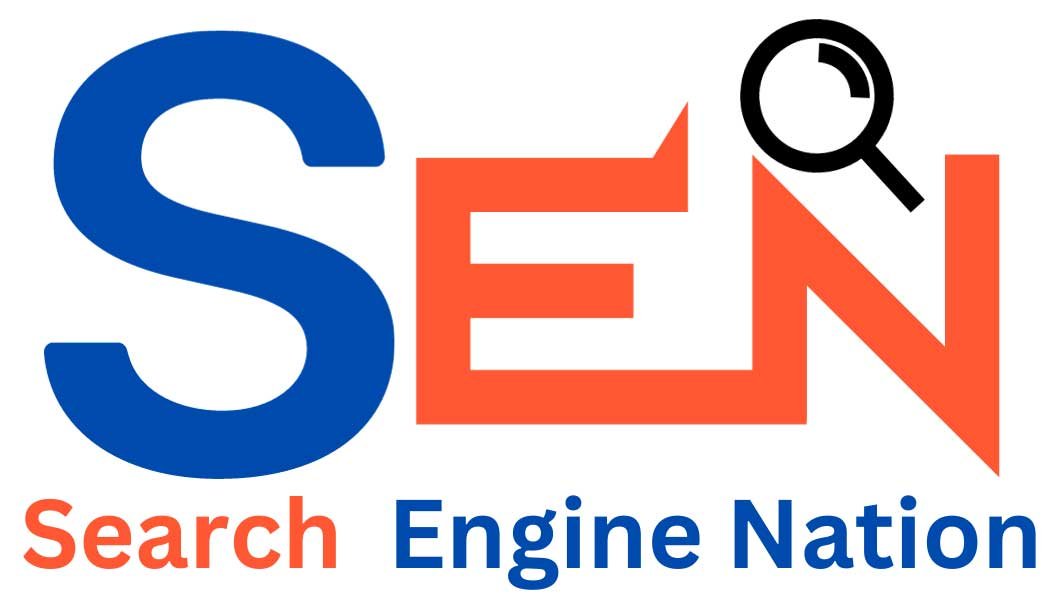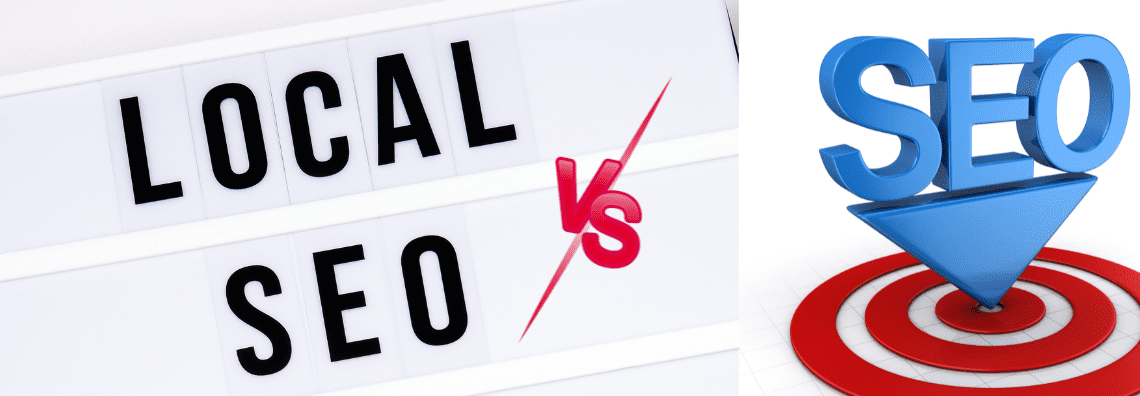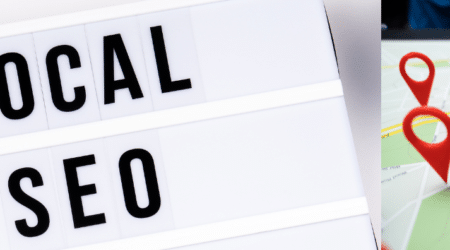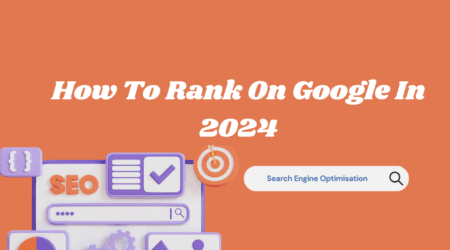Introduction to Local SEO
Roshan Rajput2024-03-01T05:22:43+00:00Local SEO refers to optimizing a business’s online presence to attract customers searching for products or services in their geographic area. It is a crucial strategy for brick-and-mortar businesses that want to be discoverable on search engines and drive foot traffic from local searches.
With over 50% of searches having local intent, local SEO provides an incredible opportunity for local businesses to connect with nearby customers. Ranking higher in local pack search results can significantly increase visibility and website traffic.
Several key factors go into an effective local SEO strategy:
On-page optimization – Properly optimizing name, address, phone number, titles, meta descriptions, content, etc.
Local content – Creating location-specific pages and content that includes relevant keywords.
Local links – Building links from local directories, partners, and review sites.
Social media- Engaging local followers and promoting content.
Google My Business– Filling out and optimizing Google My Business listing.
Reputation management – Monitoring and building positive local reviews and brand sentiment.
By focusing on these core areas, local businesses can greatly improve their local SEO and gain an edge over competitors in local pack rankings. The following sections will explore effective local SEO strategies and best practices for 2023 in more detail.
Optimizing On-Page Elements
On-page optimization is critical for helping search engines understand your website and determining how your pages should rank for local searches. Here are some key on-page elements to optimize:
Title Tags
The title tag is the most important on-page SEO element and serves as the clickable headline for your page in search results. Title tags should:
Contain your target keyword phrases
Be descriptive and enticing, motivating clicks
Be unique for each page
Be less than 60 characters
For a local business website, incorporate your business name, location, and keywords in title tags.
Meta Descriptions
Meta descriptions summarize page content and appear under the title tag in search results. They should:
Provide context about the page
Use compelling language to generate interest
Be 160 characters or less
Include your location, products/services, and value proposition in meta descriptions.
Content
Your page content provides the meat and potatoes that search engines evaluate for relevance. Make sure to:
Produce high-quality, in-depth content optimized with keywords
Structure content with heading tags (H2, H3, etc)
Include geo-targeting by mentioning your location frequently
Update content regularly to give search engines fresh material
Image Alt Text
Alt text provides written descriptions of images that search engines cannot see. Make sure to
Describe the image subject and purpose
Use keywords where relevant
Keep descriptions concise
Schema Markup
Schema markup provides structured data that search engines can understand about your business. Use schema for
Business name, address, phone number
Business hours
Products/services offered
Reviews, and ratings
Proper on-page optimization signals to search engines the relevance of your pages for local searches and helps improve rankings and click-through rates. This establishes you as an authoritative local source.
Building Local Links
Building local links is crucial for ranking well in local search results. There are several effective ways to build high-quality local links:
Local Directories
Submit your business to as many relevant local directories as possible. Some important ones are Yelp, YellowPages, Yahoo Local, Bing Local, and MapQuest. Complete your profiles thoroughly with photos, descriptions, hours, services, etc.
Claim and optimize your listings on aggregation sites like Moz Local. This will push your listings to hundreds of directories.
Submit your website to your local Chamber of Commerce’s directory. Chambers often have high authority sites.
List your business on your city government’s website if they allow local business submissions.
Industry-specific directories like Houzz for home services are great for link building.
Local Partnerships
Partner with complementary local businesses to be listed on their resources pages or “partners” sections. Offer to do the same in return.
Guest posts on local blogs and sites with a link back to your website. Look for ones specific to your city or industry.
Sponsor local events, nonprofit fundraisers, little league teams, etc in exchange for a link from their website.
Local Citations
Manual citations on high authority sites help search engines confirm your NAP consistency. Add citations on sites like your state/local government websites, popular regional publications, university websites, and so on.
There are also automated citation-building services that can help scale up your local citations quickly. Just make sure they follow Google guidelines.
List your business on aggregator sites like Moz Local and Neustar Localeze to push citations to hundreds of sites.
Encourage customer reviews on platforms like Google, Facebook, and Yelp. A customer mentions helping reinforce your local presence.
Leveraging Google My Business
A complete and optimized Google My Business listing is a powerful tool for local SEO. Here are some key steps to leverage Google My Business effectively:
Completing and Optimizing Your GMB Listing
Fill out every section of your Google My Business listing for maximum visibility. This includes your business name, address, phone number, website, hours, photos, services, products, attributes, and more.
Write detailed business descriptions, highlight key services/products, and include useful FAQs to inform potential customers about your business.
Use high-quality photos that showcase your business, employees, products/services, and interior/exterior.
Select the correct categories and attributes to help Google understand your business and match you with relevant searches.
Ensure your listing has complete and accurate info at all times – update details if they change.
Getting Reviews
Encourage genuine reviews from happy customers via email, social media, and in-store signs. Positive reviews boost visibility.
Respond professionally to all Google reviews, thanking happy customers and addressing constructive feedback if any. This shows you value customers.
Download and showcase good reviews on your website to build trust and social proof.
Posting Updates and Offers
Post regular updates showcasing events, offers, photos, or news about your business. This signals you are actively maintaining your listing.
Create limited-time offers or events to engage local customers via your GMB listing. For example, discounts for first-time customers.
Share updates consistently, not just occasionally. This establishes your business as authoritative and top of mind.
In summary, optimizing and actively managing your Google My Business listing gives your local business a strong digital presence on Google search and maps. It’s worth investing time to leverage GMB fully as part of your local SEO strategy.
Local Content Marketing
Creating location-optimized content is a powerful way to improve your local SEO and attract more customers in your target region. Here are some key content marketing strategies for 2024:
Create Location Pages
Dedicate pages on your website to serve different neighborhoods, cities, and regions you want to target. Make sure to include relevant keywords and optimize these pages for local SEO. For example, a plumber in Los Angeles could create pages like “Plumber in West Hollywood” or “Emergency Plumber in Downtown LA”.
Optimize each page with keywords, titles, meta descriptions, images, and content tailored to that location. Link to your location pages internally and externally to boost their rankings.
Produce Local Blog Content
Regularly publish blog posts that focus on topics of interest in your geographic area. For a restaurant, this could be posted like “The 5 Most Romantic Restaurants in Austin” or “Where to Find the Best BBQ in Dallas”.
Optimizing blog posts for local keywords and linking to your location pages helps drive local traffic. Make sure to highlight your own business within relevant local blog content.
Create Location-Based Landing Pages
Build dedicated landing pages that target service requests for different locations. For example, a cleaning service could have unique pages for “House Cleaning in Miami”, “Office Cleaning in Tampa” and “Post-Construction Cleaning in Orlando”.
Having landing pages tailored to each service area makes it easier to rank for localized searches and convert that traffic. Use pages like this to generate leads in specific regions.
Optimizing website content around target locations helps businesses capture more local traffic and conversions. Focus on producing regular location-based blogs, pages, and landing pages to improve local SEO and visibility.
Social Media Marketing for Local SEO
Social media platforms like Facebook, Instagram, and Twitter provide excellent opportunities to connect with potential local customers and build brand awareness in your area. Here are some tips for optimizing your social media presence for local SEO:
Geotag Your Location
Make sure your business location is geotagged in your social media bios and any location-specific posts. This helps to signal your local relevance to search engines and users searching in your area.
Engage Your Local Audience
Actively engage followers and customers from your geographic region by responding to messages and comments, sharing user-generated content, and participating in local discussions. This helps establish your business as an active part of the community.
Highlight Your Physical Location
Frequently post photos of your business storefront, facilities, products, services, and local events/sponsorships on your feeds. This visually reinforces your local presence.
Run Local Ad Campaigns
Leverage Facebook, Instagram, and Twitter ads to promote your business to local demographics and target followers within a specific radius of your business location(s).
Optimize Business Listings
Ensure all social media profiles are consistently listed with your current business name, address, phone number, and website URL. This helps local search visibility.
Cross-Link Your Profiles
Cross-link your social media pages and user profiles across platforms to establish local SEO signals. Having an interconnected local presence is valuable.
Highlight Satisfied Local Customers
With permission, share positive reviews, testimonials, and local customer stories from social media and your website to showcase your reputation and community connection.
Local PPC Ads
Pay-per-click (PPC) advertising can be a highly effective tactic for driving local customers to your business. With PPC ads, you only pay when someone clicks your ad, making it a cost-efficient way to reach nearby searchers.
To maximize your local PPC campaigns, focus on geo-targeting and location extensions:
Geo-Target Your Campaigns
When setting up your PPC campaigns in Google Ads or Microsoft Advertising, specify the geographic radius you want to target. For a local business, this is generally within 5-20 miles of your physical location.
Geo-targeting allows you to hone in on searchers near your business and show them relevant ads. Make sure to set your location target at the ad group or campaign level.
Use Location Extensions
Location extensions in your PPC ads prominently display your business name, address, and phone number. This makes it easy for nearby searchers to find your location details and get in touch.
Some key benefits of location extensions include:
Higher ad visibility and clickthrough rates
Lower cost-per-click bids
More phone calls and in-store visits
When adding location extensions, use your full business name, street address, city, state, zip code, and local phone number. Keep the information accurate and consistent across all PPC ads.
With strategic geo-targeting and location extensions, local PPC campaigns can become a major driver of in-store traffic and sales. Monitor your results and optimize for conversions.
Mobile Optimization
Mobile optimization is crucial when it comes to local SEO in the modern digital landscape. With the majority of online searches now taking place on mobile devices, having a mobile-friendly site can be a major ranking factor for local businesses seeking visibility in local search results and SERPs (search engine results pages).
The first step is to ensure your website is responsive and dynamically adapts to various screen sizes, allowing users to conveniently access content on smartphones and tablets. A mobile responsive design provides an optimal viewing experience across devices. Make sure navigation works intuitively, content displays properly without clipping or horizontal scrolling, buttons and links are appropriately sized for touch screens, and the page loads quickly on cellular connections.
Page speed is especially important for mobile users who expect near-instant results. Optimizing images, removing unnecessary code, compressing files, and implementing browser caching can help reduce load times. Localized SERPs factor page speed into rankings, since slower load times lead to higher bounce rates. Aim for load speeds under 3 seconds if possible.
AMP (Accelerated Mobile Pages) is another way to boost local SEO through quick-loading mobile pages. Create AMP versions of key landing pages to take advantage of this format that displays pages almost instantly in search results on mobile devices.
Voice search optimization can also be advantageous, as a growing number of local searches are conducted via voice assistants. Ensure your structured data and title tags work well when read aloud.
Overall, optimizing for mobile users and local SERPs must be a priority. A fast, seamless mobile experience keeps visitors engaged and improves conversions and organic visibility for local businesses.
Local Reputation Management
Managing your local reputation is crucial for any business with a physical location. With review sites like Yelp and Google becoming the first place consumers turn to for information, you need a strategy to monitor, improve, and respond to your online reputation.
Monitoring Online Reviews
Check review sites like Yelp, Facebook, and Google regularly to see new customer feedback. You can set up alerts for when new reviews are posted.
Use a tool like ReviewTrackers to aggregate reviews from various sites into one dashboard. This allows you to easily scan for new reviews.
Look out for sudden increases or decreases in ratings and negative review spikes that may indicate an underlying issue.
Enhancing Positive Reputation
Respond professionally to positive reviews by thanking the customer. This shows you value their feedback.
Offer incentives for customers to leave reviews after a positive experience. This could be a discount for their next visit.
Feature positive testimonials and reviews on your website and social media. This builds trust with potential new customers.
Train staff to deliver excellent customer service. Happy customers leave better reviews.
Addressing Criticisms
Take negative reviews seriously and respond politely, apologizing for the bad experience. Offer to make it right for the dissatisfied customer.
Have a protocol for negative reviews, including responding within 24 hours. Don’t get defensive or argumentative.
For serious allegations, conduct an internal investigation. Take appropriate actions to address if valid complaints surface.
Ask dissatisfied customers if they’d be willing to revise their reviews after you address their concerns.
Learn from negative feedback to improve your business. Then update affected policies, products, or training.
Tracking and Improving Performance
A critical component of any SEO campaign is tracking and measuring results so you can continuously improve your strategy. When it comes to local SEO, there are a few key metrics to monitor:
Website Analytics
Track keyword rankings in Google to see where you rank for important local search queries related to your business and location. Ideally, you want to rank in the top 3 organic results.
Look at traffic sources – are visitors coming from organic search, maps, or local paid ads? Growing organic traffic indicates your local SEO efforts are paying off.
Monitor site visits, time on site, bounce rate, and conversion metrics. Improving these shows your website content is resonating with local searchers.
Check geographic data – where are your website visitors located? You want most of your traffic to come from your target service area.
Set up conversion and lead tracking to see what actions site visitors are taking. Calls, contact form submissions, bookings, etc.
Local Listing Analytics
Review Google My Business insights for metrics like searches, views, actions, phone calls, photos, etc. This shows how visible and popular your listing is.
Check ratings and reviews on listings. Aim for consistently 4+ star ratings. Address any negative reviews.
Ensure NAP (name, address, phone) is consistent and listings are claimed/verified for maximum visibility.
Measuring ROI
Look at actual sales, leads, appointments, and phone calls to gauge real local business impact.
Factor in costs of local SEO efforts vs. revenue generated to determine true ROI.
A/B tests different local SEO strategies and tactics and goes with what delivers the best results.
The key is constantly inspecting your local SEO analytics across websites, listings, ads, and conversions to identify new opportunities to improve and grow your local visibility. Test new strategies, double down on what works, and tweak what doesn’t to maximize your local search presence.












